London’s Science Museum is home to many amazing and wonderful exhibits, from flight to biology and medicine to locomotives. On a recent visit, I found too that is home to the world’s oldest clock and watch museum. The Clockmakers’ Museum over 700 exhibits including more than 600 watches, 80 clocks, marine chronometers, sundials and more. In this article we will take a look at this stunning collection and perhaps encourage you to visit it for yourself!
The Clockmakers’ Museum, London
This collection of horological delights has been collated over many years by the Worshipful Company of Clockmakers, the world’s oldest institution dedicated to horology having been established in 1631. The collection resided in the Guildhall in Moorgate, before being relocated to level 2 of the Science Museum in 2015, and it is widely considered as one of the finest such collections in the world.
The collection is aptly arranged in chronological order (assuming you follow the right way around the floor of course!) such that the oldest pieces are encountered first, starting with horological innovation from as early as the 1600s in London. The first display to catch my eye was a trio of stunning longcase clocks and a massive, eye-catching Astronomical and Automaton Monstrance Clock. Two of the longcase clocks were crafted at the hands of Clockmakers Company members Edward East (C) and John Fromanteel (R), with the astronomical masterpiece crafted at the hands of Johann Schneider in around 1625.
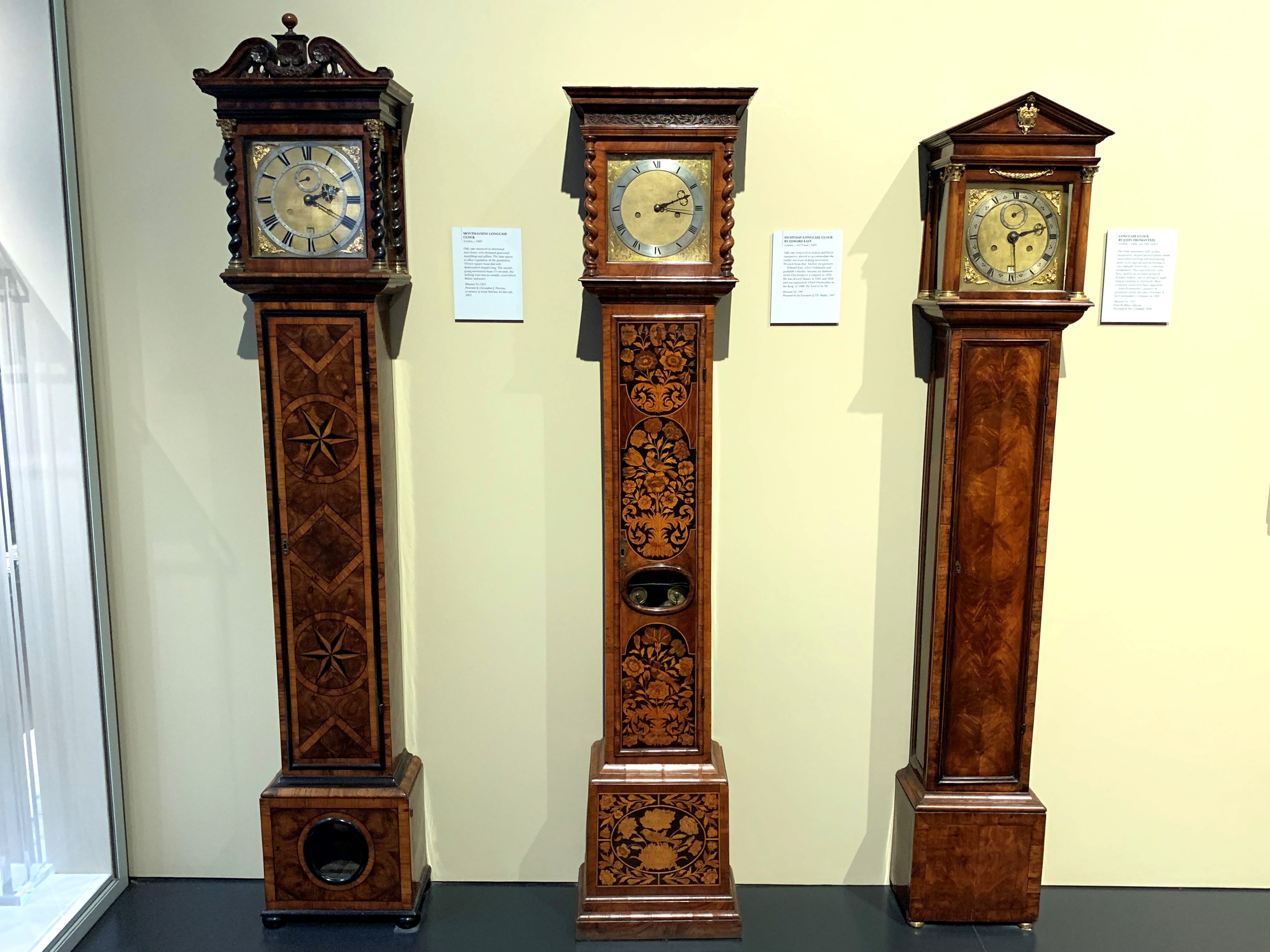
Longcase clocks
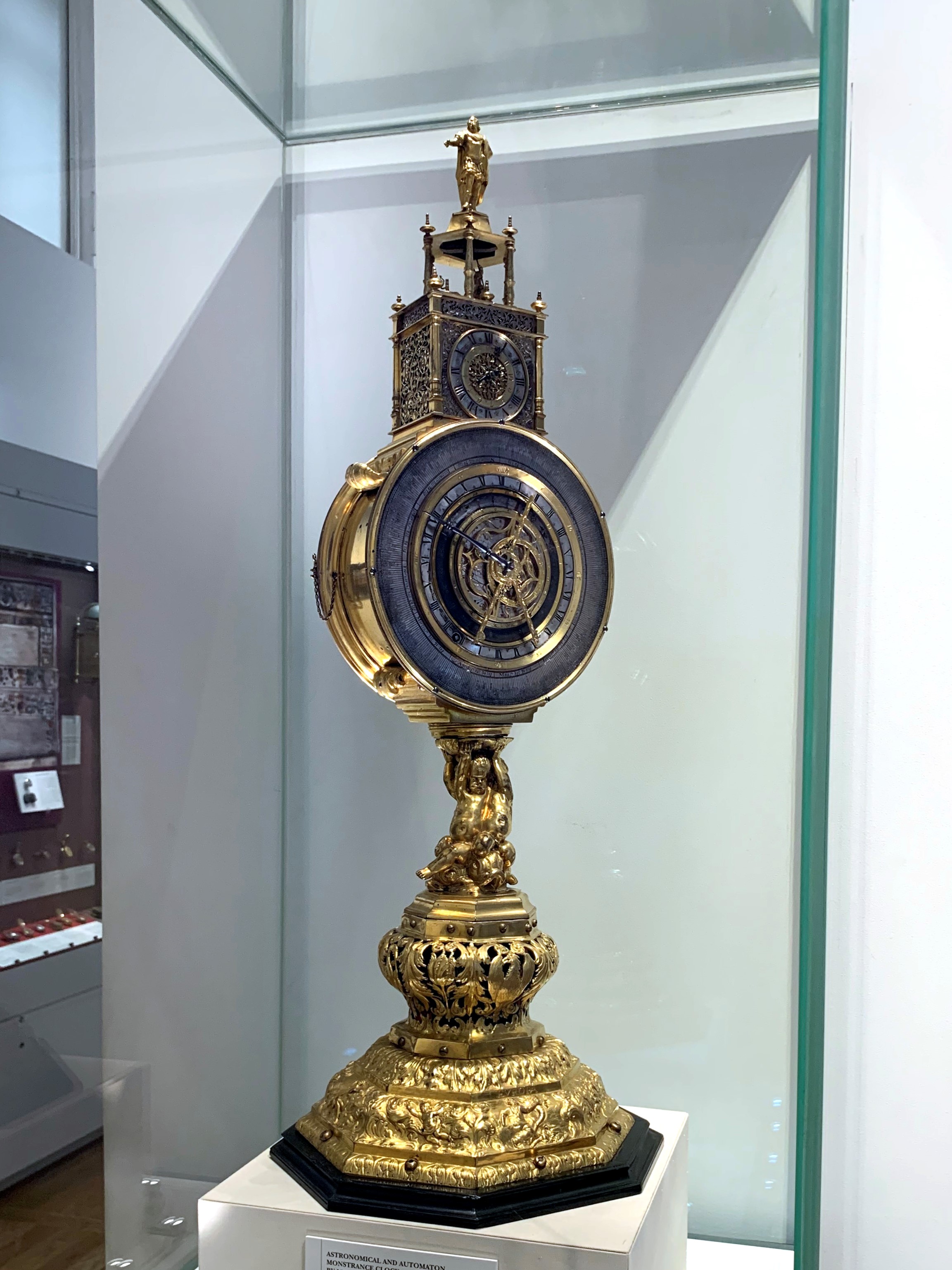
Astronomical and Automaton Monstrance Clock
It was in the mid-1700s that clockmakers and watchmakers sought to improve the reliability and accuracy of their pieces with a particular objective of assisting navigation at sea with a marine chronometer. The collection houses a vast array of chronometers from some of the most important names in the history of horology, including John Harrison (who completed his first sea clock marine chronometer ‘H1’ in 1735), Thomas Mudge (who in 1755 created the lever escapement still widely used today), and John Arnold (invented the overcoil balance spring and held in the same horological regard as the great Abraham-Louis Breguet). These marine chronometers were large timepieces that were housed and fitted within a large box.
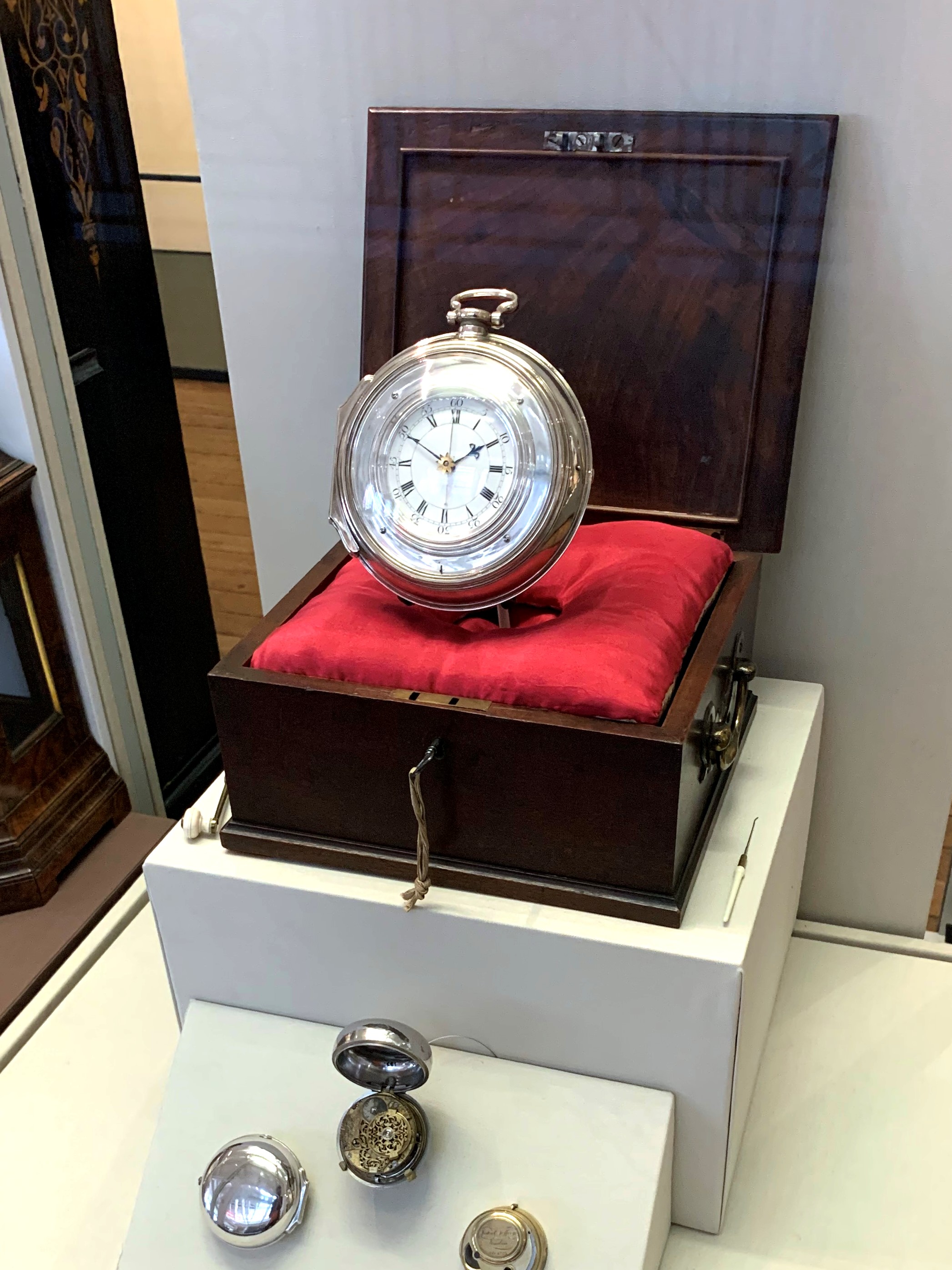
‘H5’, Harrison’s last marine chronometer
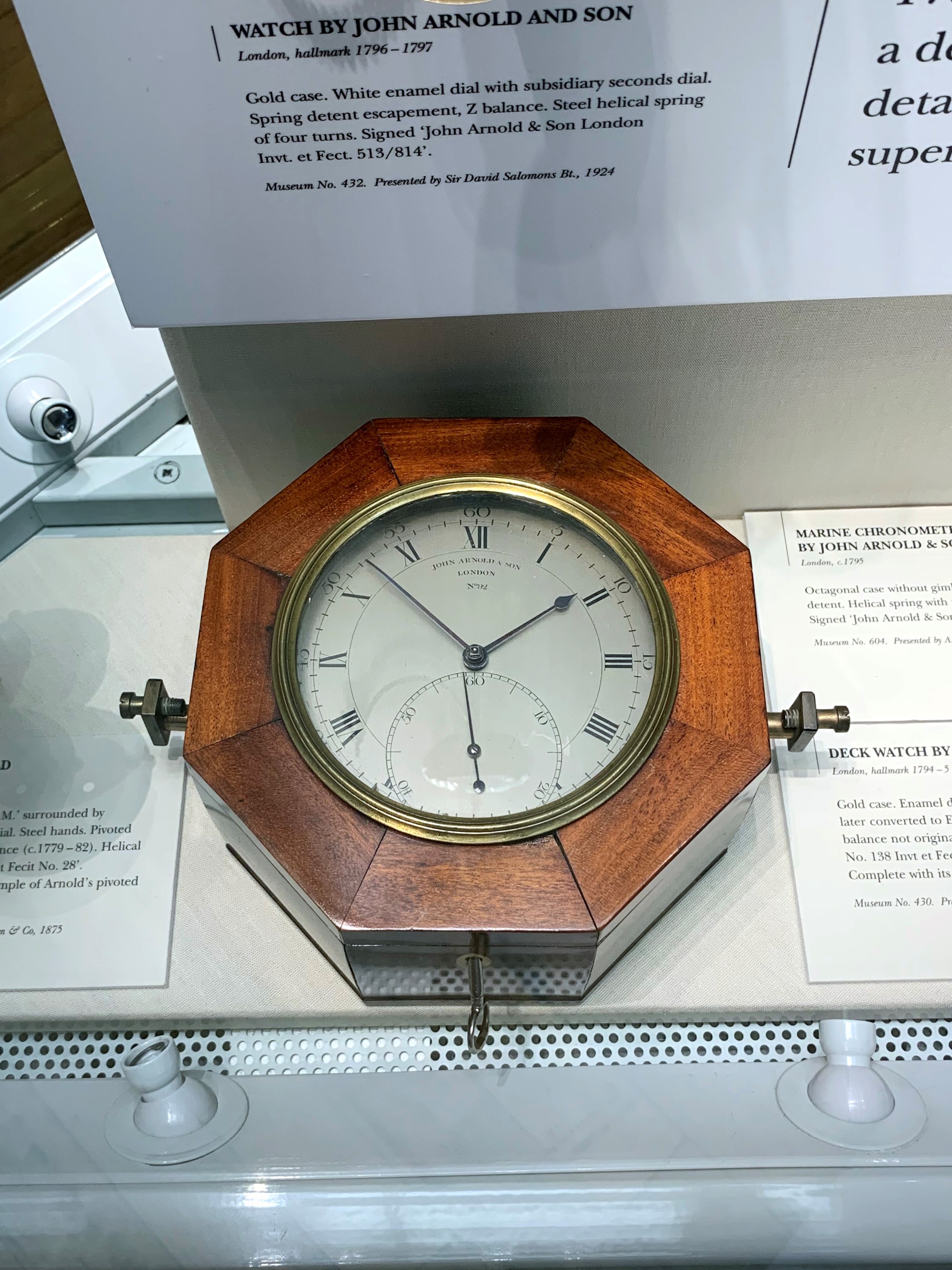
Arnold & Son marine chronometer
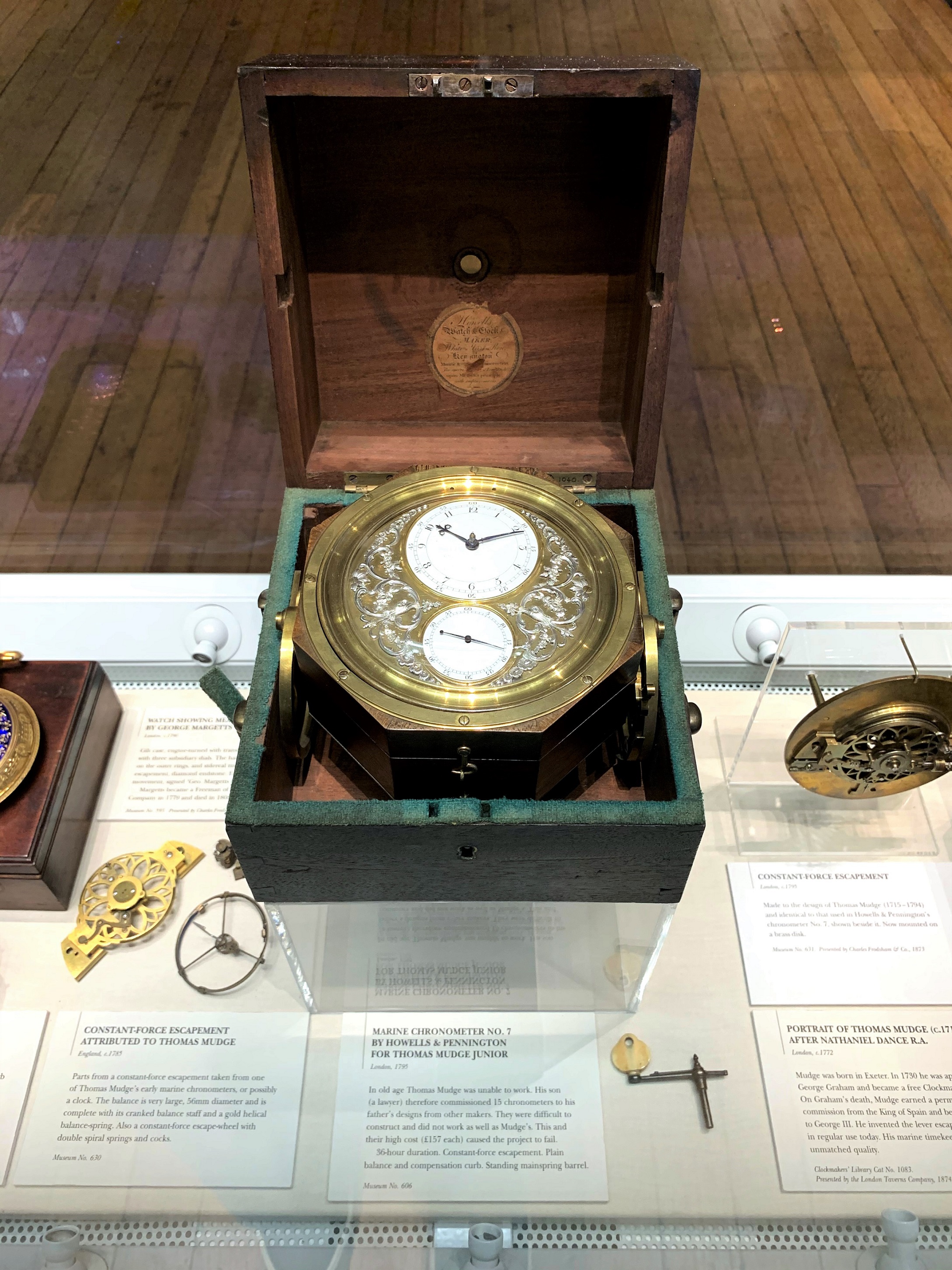
Chronometer 7 commissioned by Thomas Mudge Jr for his aging father
As I transitioned through the collection beyond the incredible marine chronometers, the next area that really caught my eye was also a huge array of pocket watches. And when I say huge, I mean huge. These pieces came from some of the most famous names in watchmaking too, including Breguet, Berthoud, Urban Jürgensen, Vacheron & Constantin, and the list goes on. There was even a Breguet Souscription pocket watch, the piece upon which the modern-day Tradition collection is based, and it is easy to see how this inspiration has manifested itself in today’s collection.
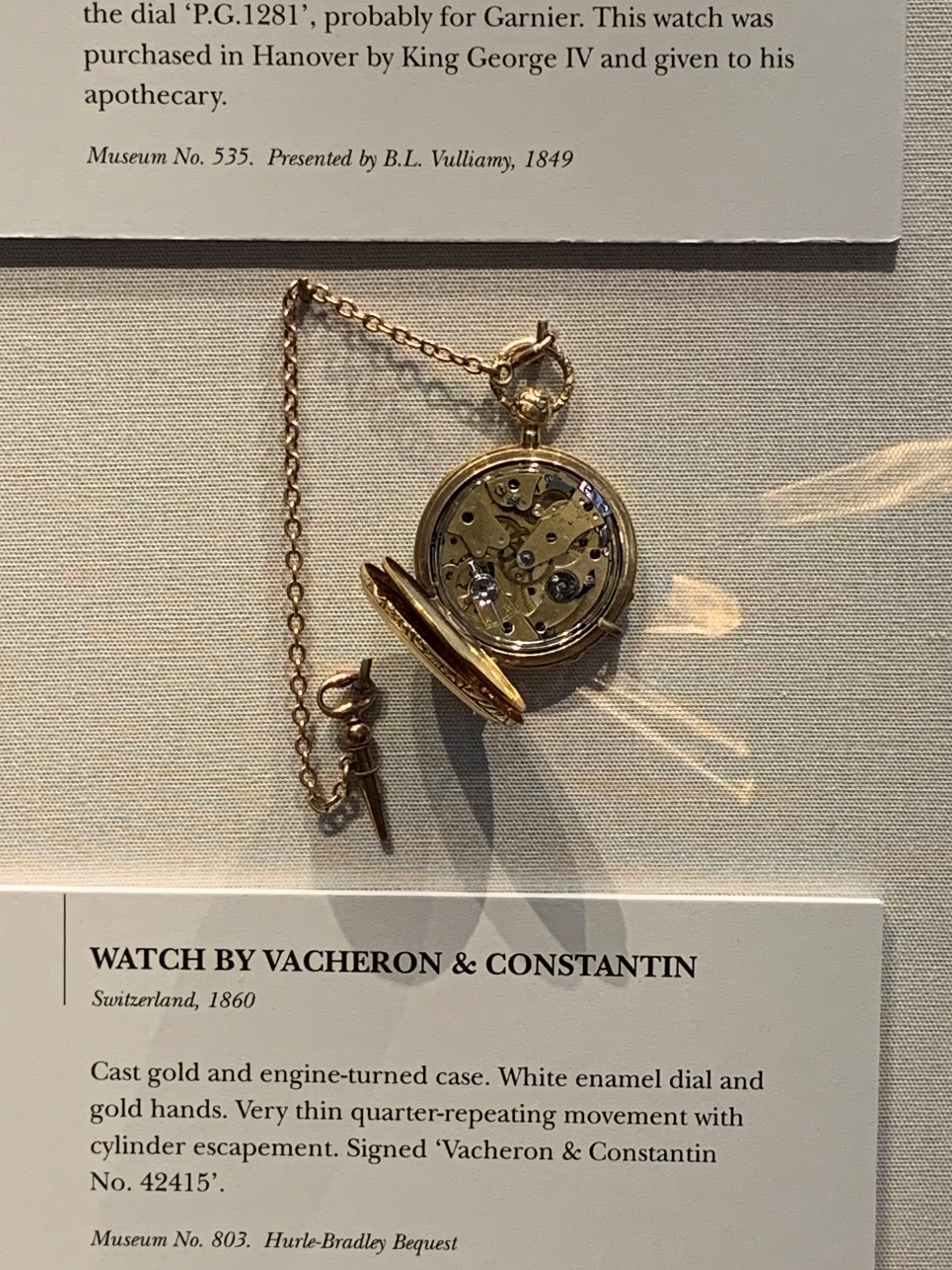
Vacheron & Constantin pocket watch
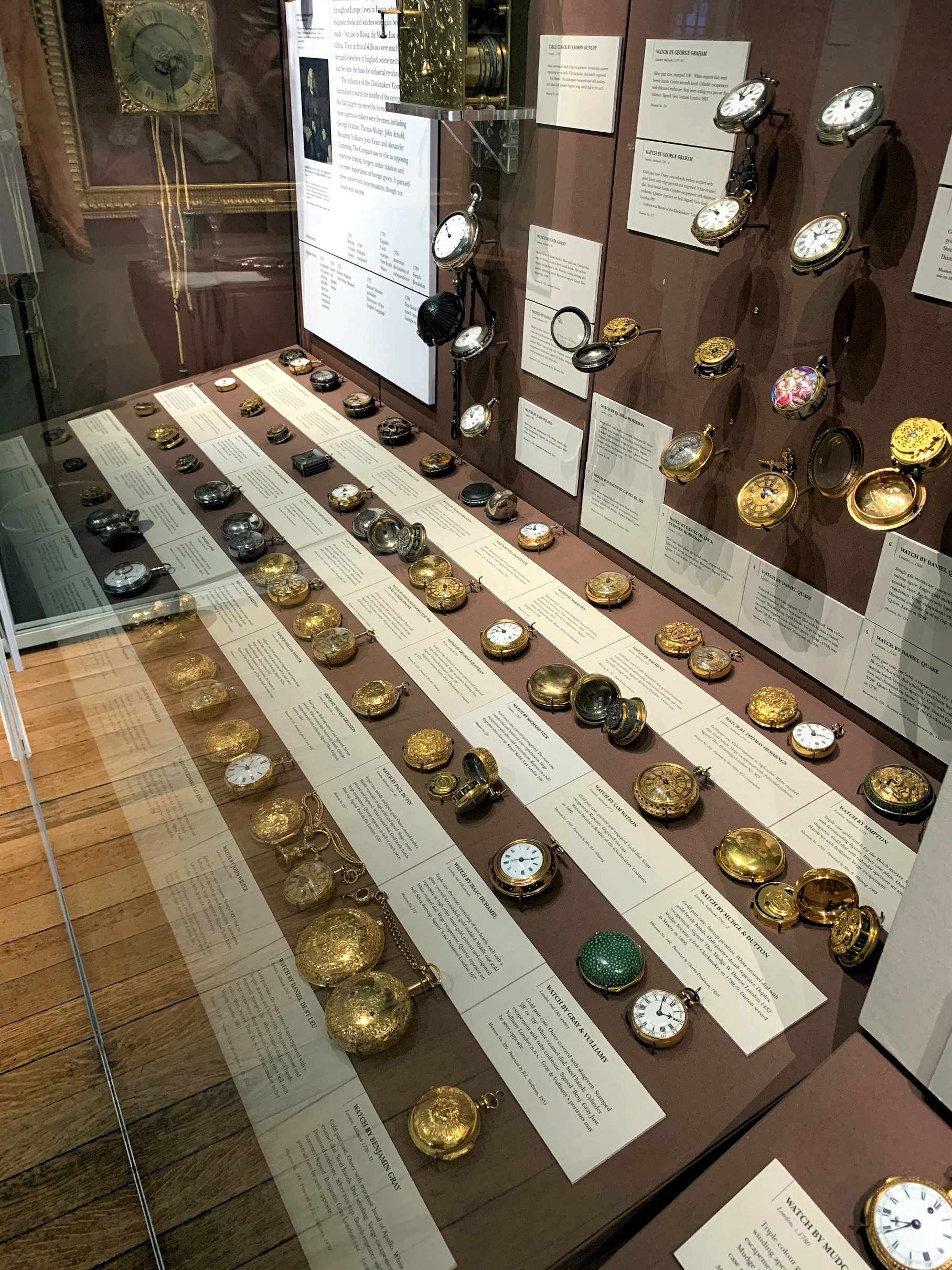
Pocket watch display cabinet
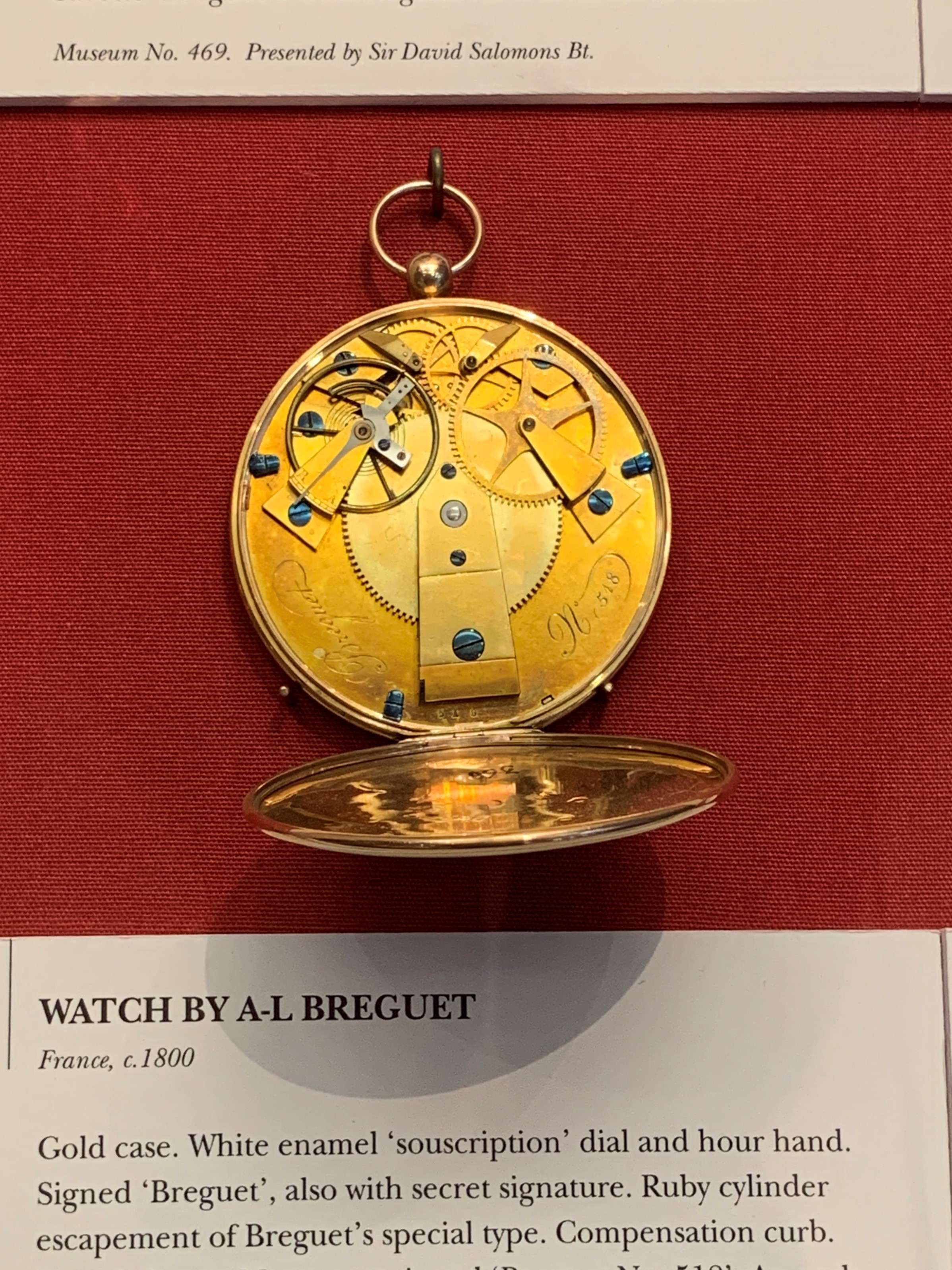
Breguet Souscription pocket watch, the inspiration behind the current Tradition collection
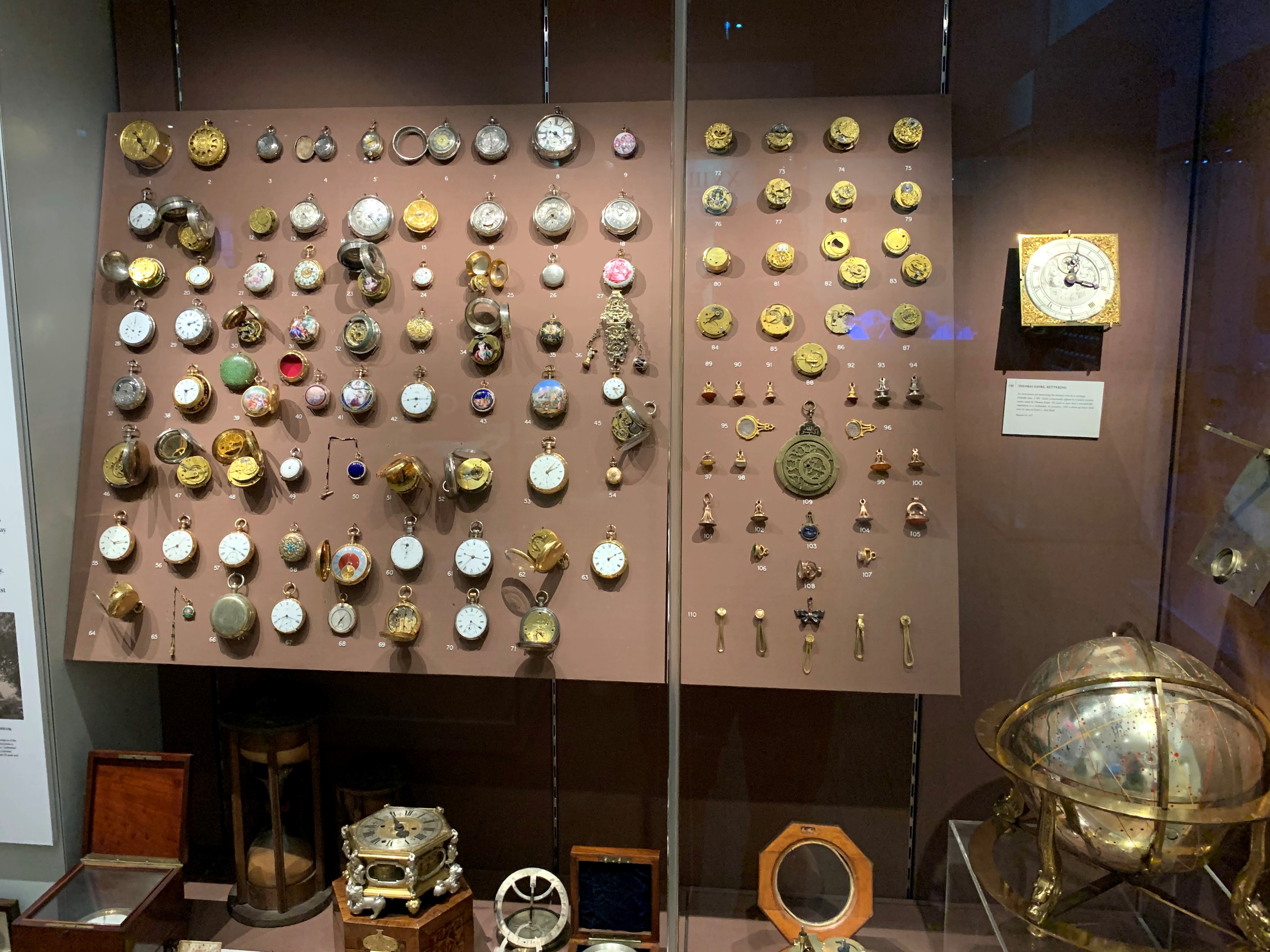
Another display cabinet full of pocket watches
Whilst the exhibits so far were incredible to behold, I personally think that the best was very much saved until last – an area dedicated to the late Dr George Daniels, alongside pieces by other great modern watchmakers such as Roger Smith and Derek Pratt.
Dr Daniels invented the co-axial escapement (read more about this here), and is often described as the greatest watchmaker of the Twentieth Century. Roger Smith was Dr Daniels’ apprentice turned modern-day master, continuing Dr Daniels’ work on the co-axial escapement and is widely considered one of the world’s greatest living watchmakers. The late Derek Pratt is held in equally high regard, the most notable amongst his own innovations being his remontoire, delivering constant force to the balance wheel over the entire period as the mainspring winds down and resulting in a dead-beat seconds display (a ‘tick’ movement as opposed to a sweep).
It is rare enough to see one timepiece bearing the names of these greats, let alone multiple pieces from all 3, with only several feet between them, so truly something quite special.
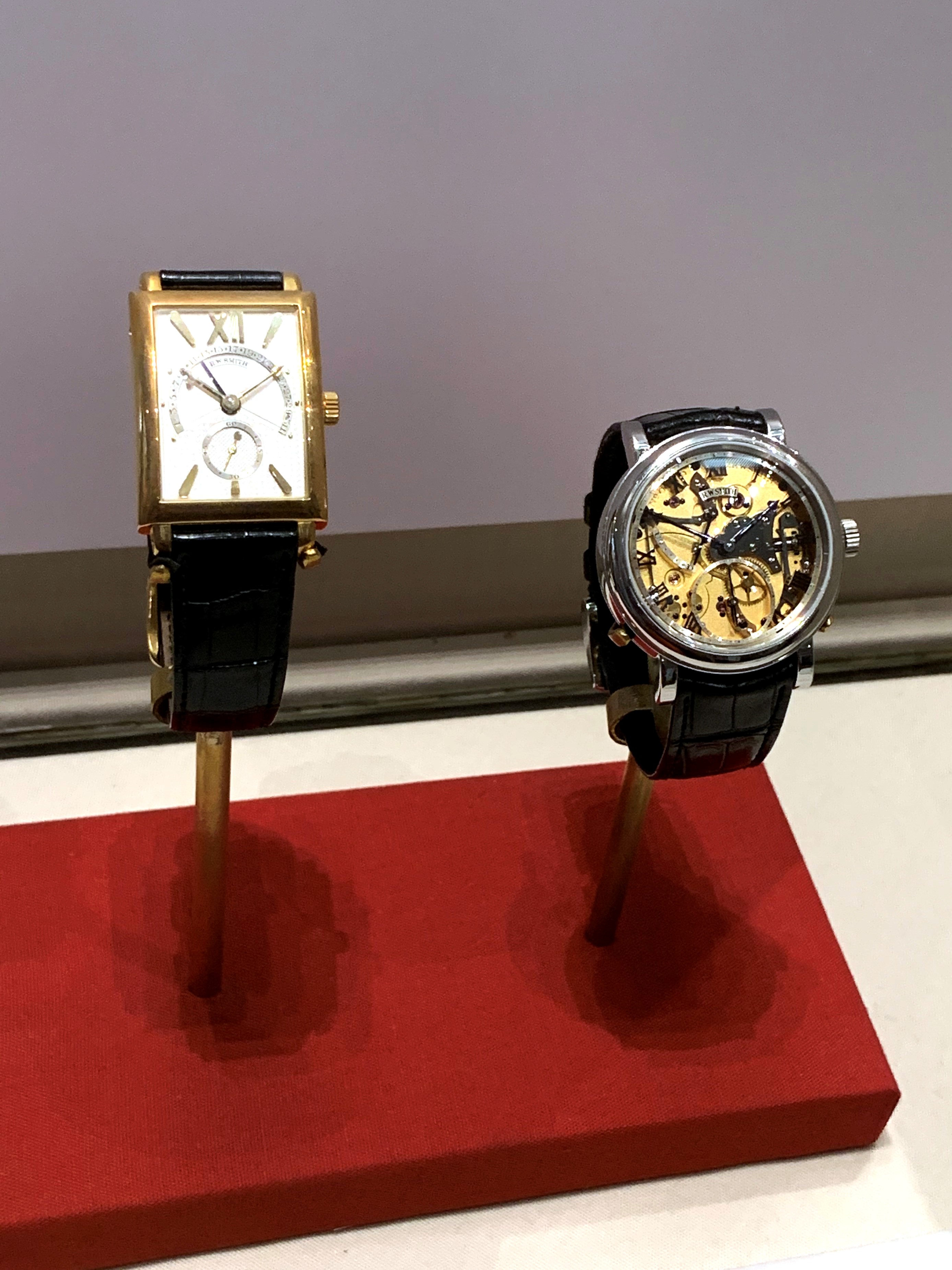
Roger Smith wristwatches - prototype (L) and Series 2 (R)
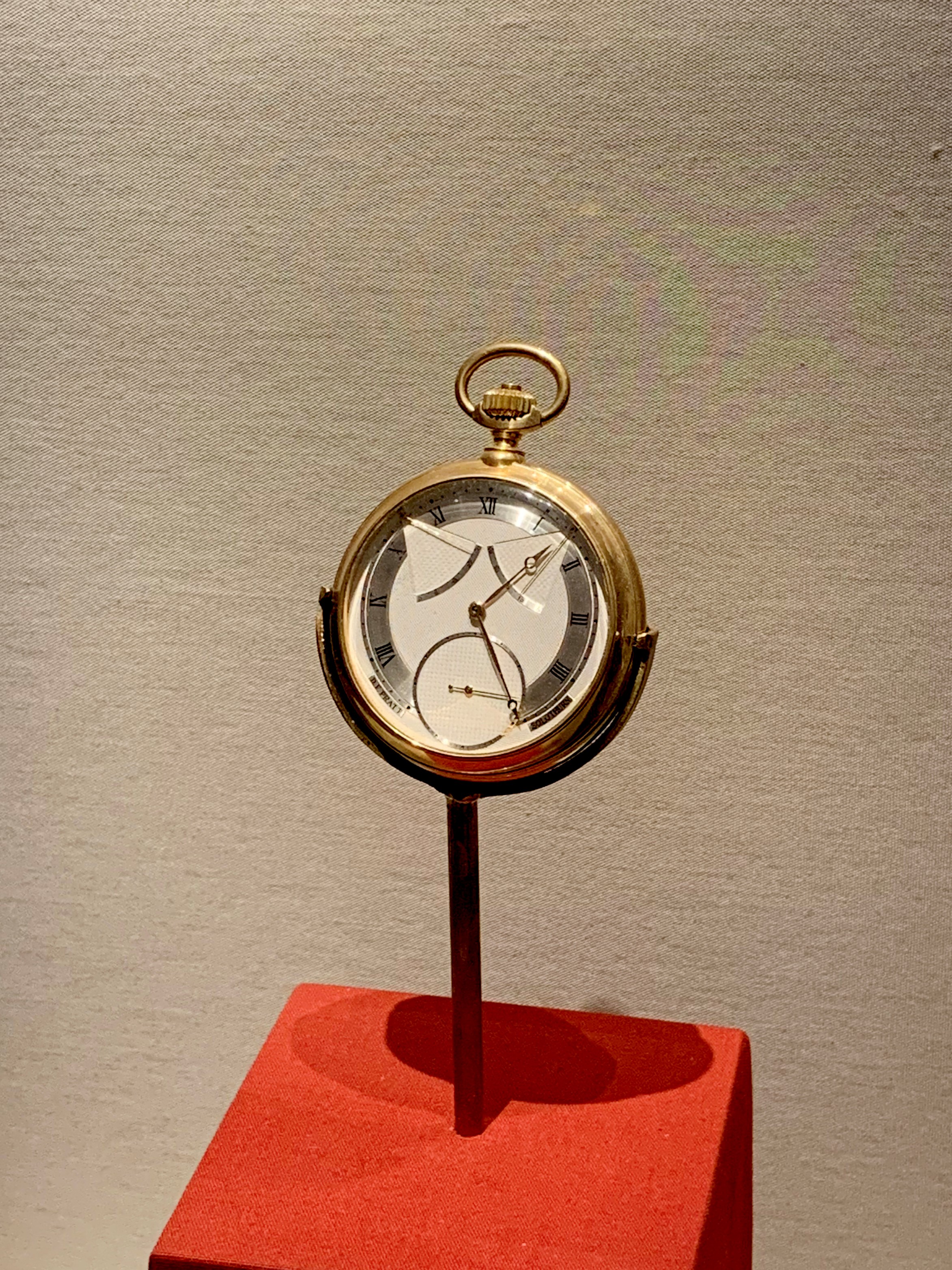
Derek Pratt pocket watch
The two personal highlights for me were firstly seeing Dr Daniels’ own Patek Philippe Nautilus, which he had fitted with his own co-axial movement in 1981 at the request of the Swiss manufacturer. The intent behind this was to demonstrate the quality of the escapement, in an effort to encourage the Swiss watch industry to adopt it. Patek Philippe ultimately declined, although Daniels continued to wear the watch for ten years straight, with the escapement proving reliable for the duration and not once requiring any attention. As you might have guessed, that makes this the oldest co-axial watch in existence and an exhibit of extremely rare horological prominence.
The second highlight was to see Dr Daniels’ Space Traveller pocket watch. I can remember the first time I became aware of this when watching Dr Daniels’ lecture to the American Watchmakers Institute in 1990. He famously said joked that “when you are on your package tour to Mars, you need a watch like this”, owing to its cosmic complications with the moon phase, mean and solar time all displayed on the dial – he even named it in honour of the 1969 moon landings.
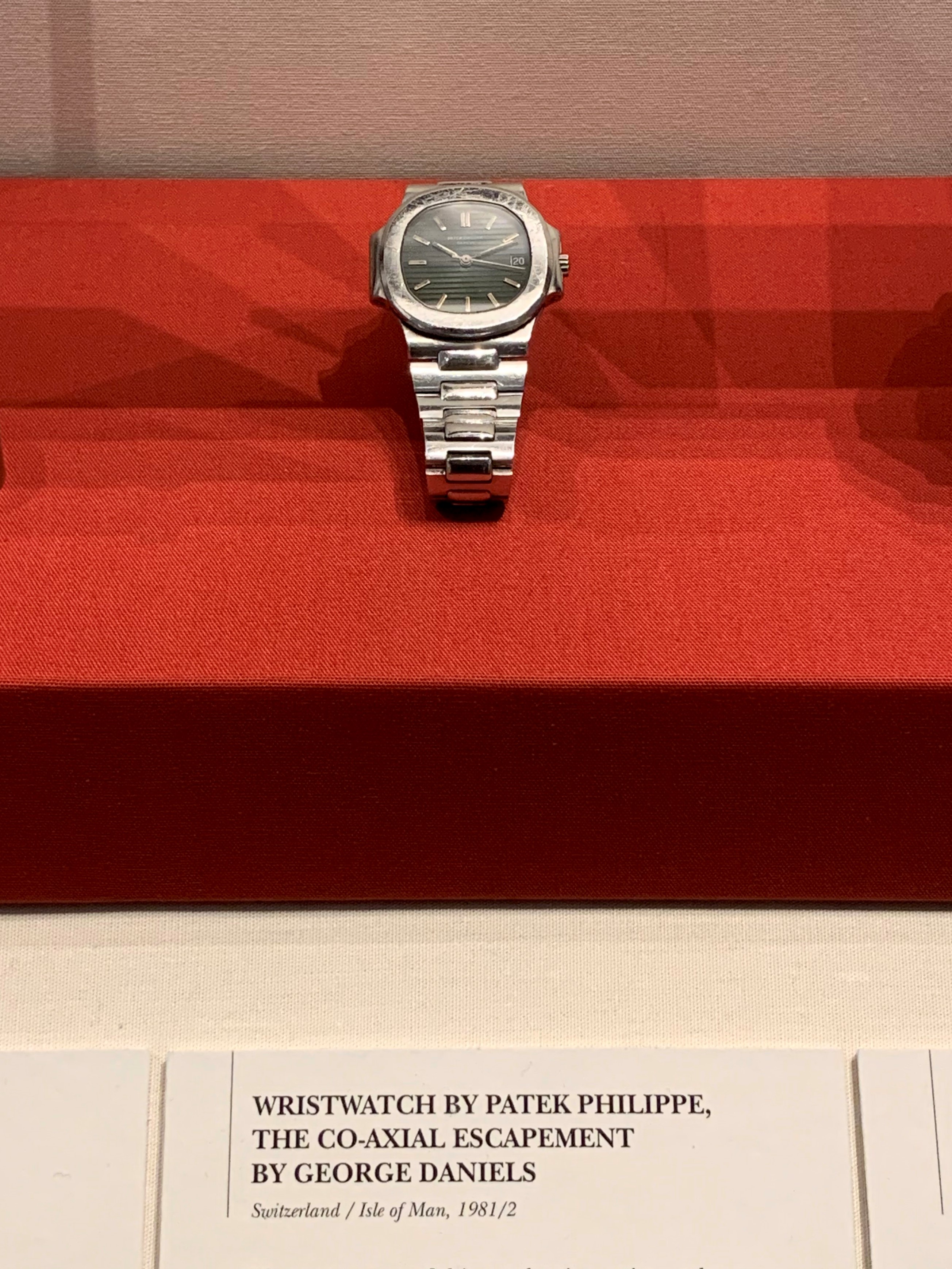
Dr George Daniels’ Patek Philippe Nautilus, the oldest co-axial wristwatch in the world
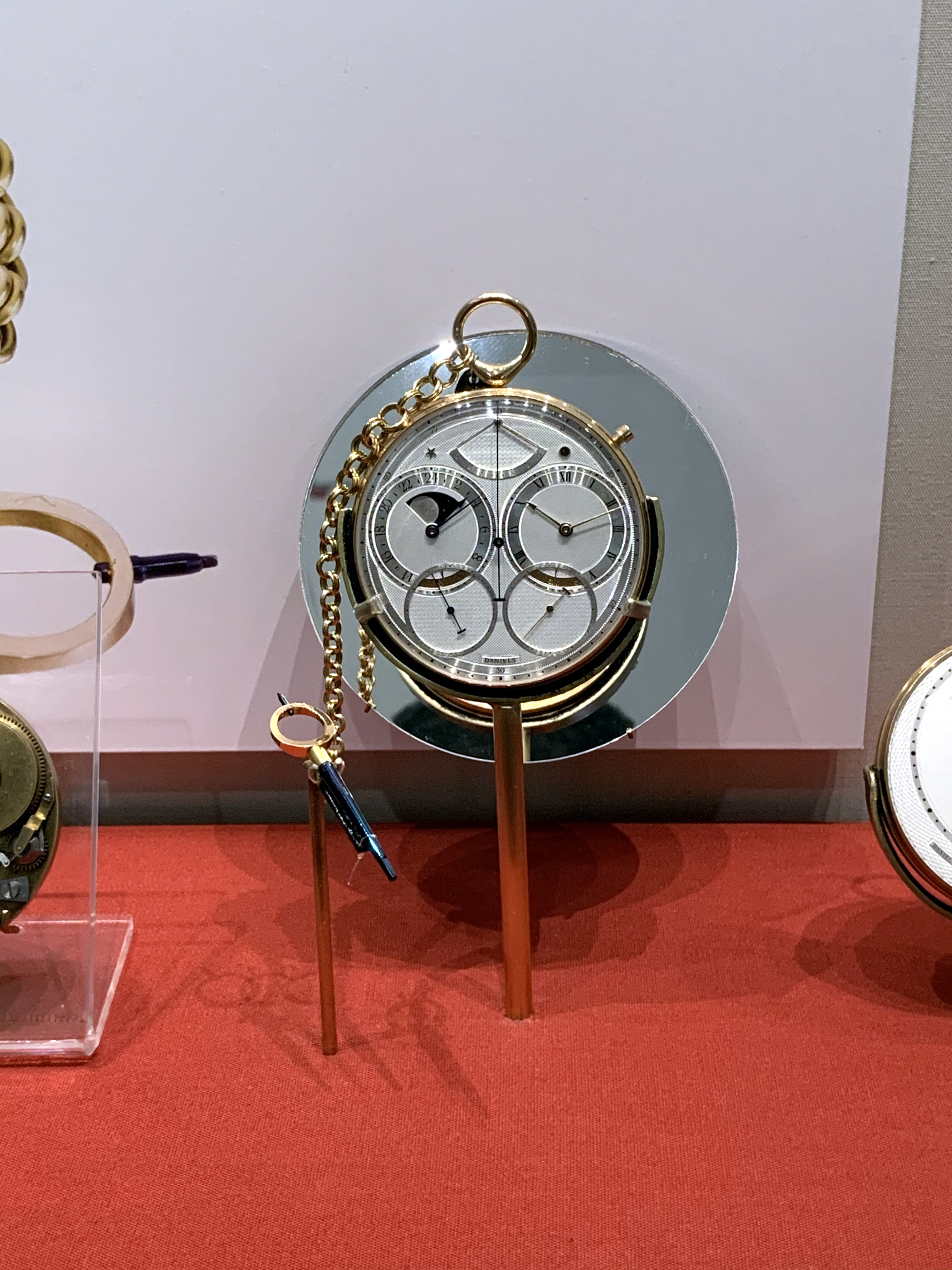
George Daniels’ Space Traveller
The pieces on show that we have described here are but the tiniest percentage of what is on show in the Clockmakers’ Museum, and you could quite easily wile away many hours or even days in order to do the collection justice. It really is a must for any watch enthusiast and a visit is very highly recommended!
If you have any questions, or want to share your thoughts, please get in touch via our Contact page, or via our Instagram.
The Science Museum is in Kensington, London and is free to visit – you can read more about the Clockmakers’ Museum and book your visit at https://www.sciencemuseum.org.uk/see-and-do/clockmakers-museum
You can also learn more about the Worshipful Company of Clockmakers at http://www.clockmakers.org/
You might also be interested in:
- “It’s complicated”: the Co-Axial escapement
- Influential Watchmakers: Abraham-Louis Breguet
- Recommended Reading: “All in Good Time – Reflections of a Watchmaker” by George Daniels
- Watch Stationery and Gift Ideas
- Watch Books, Watch Boxes and more at the Watch Affinity Shop on Amazon (commissions earned)
As an Amazon Associate, I earn from qualifying purchases – thank you for your support

